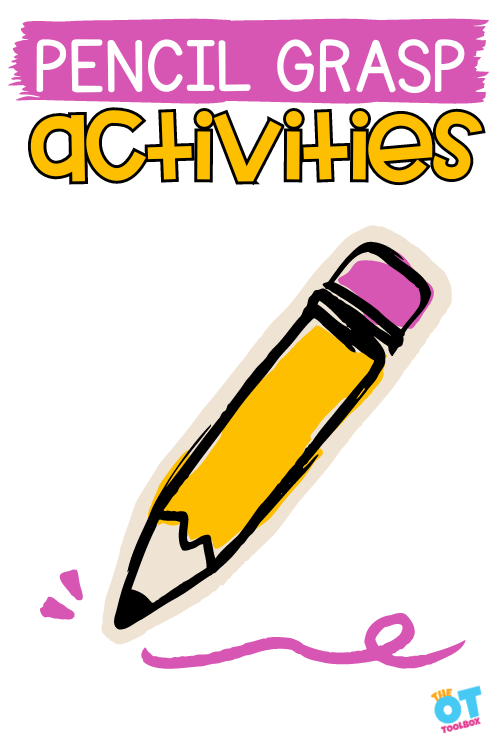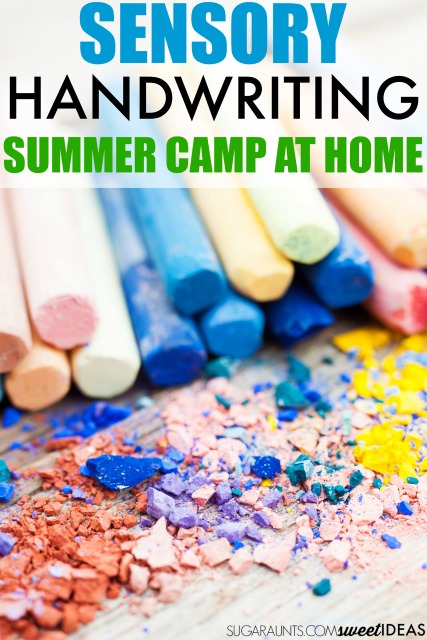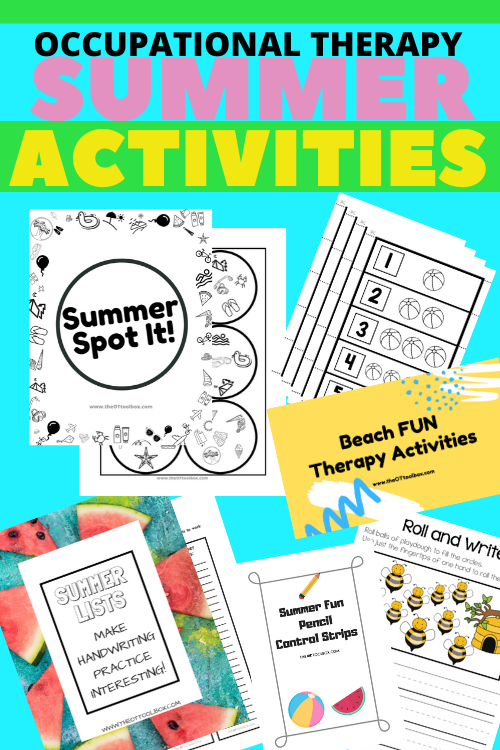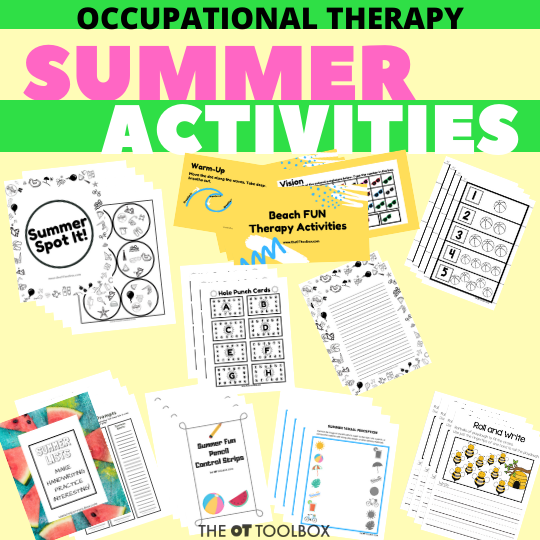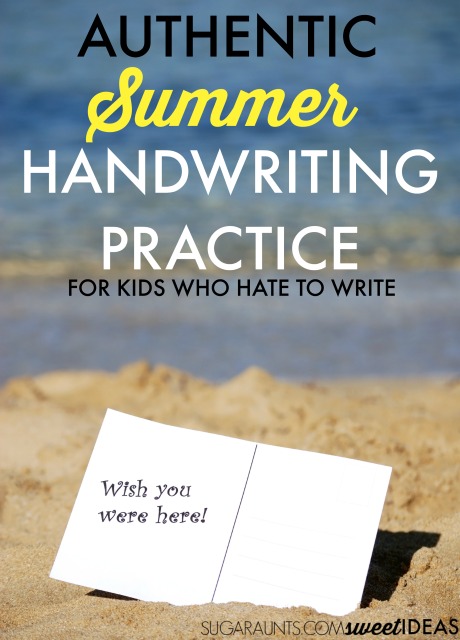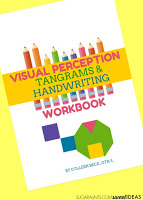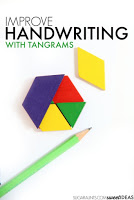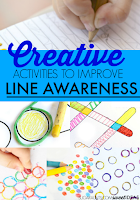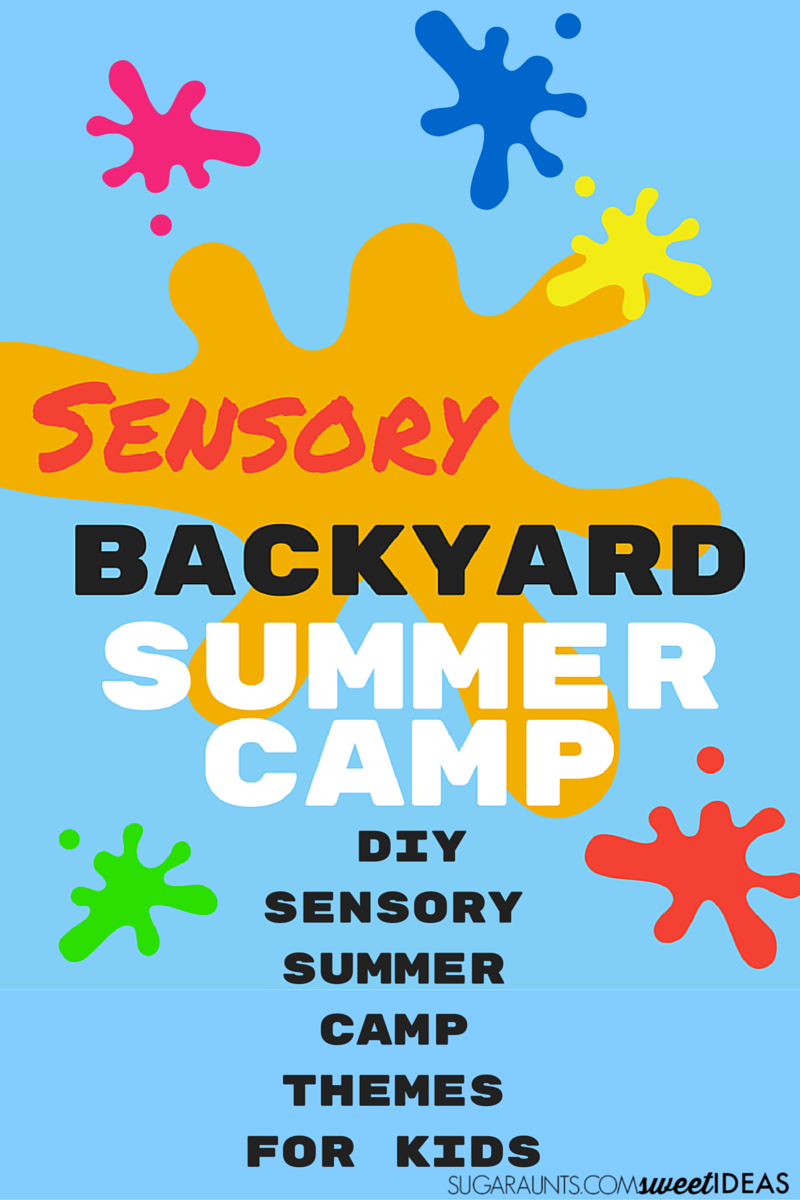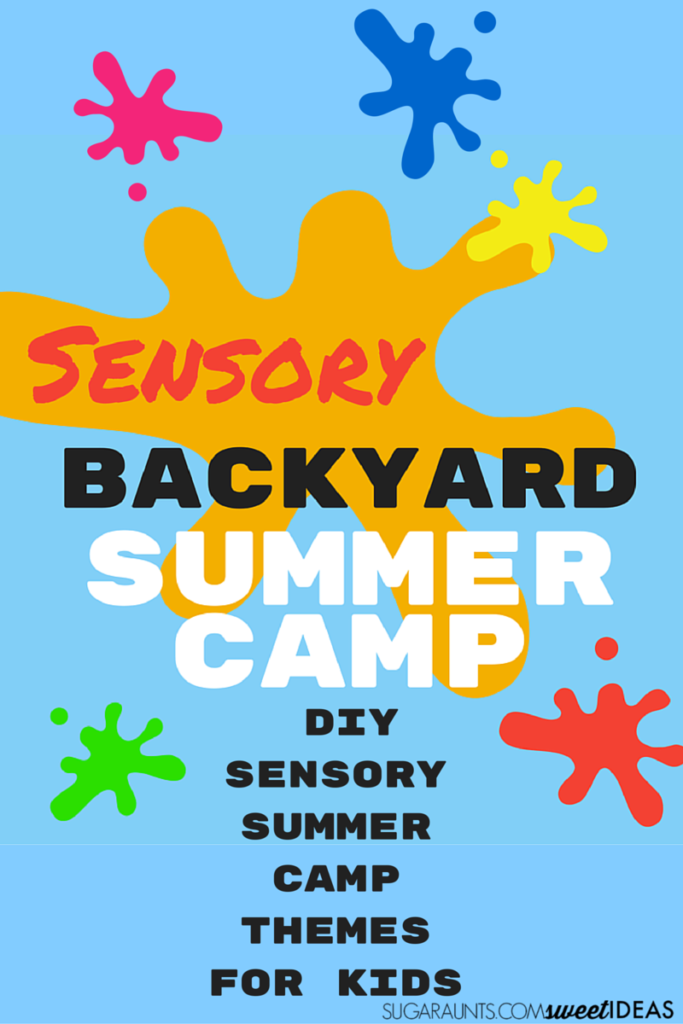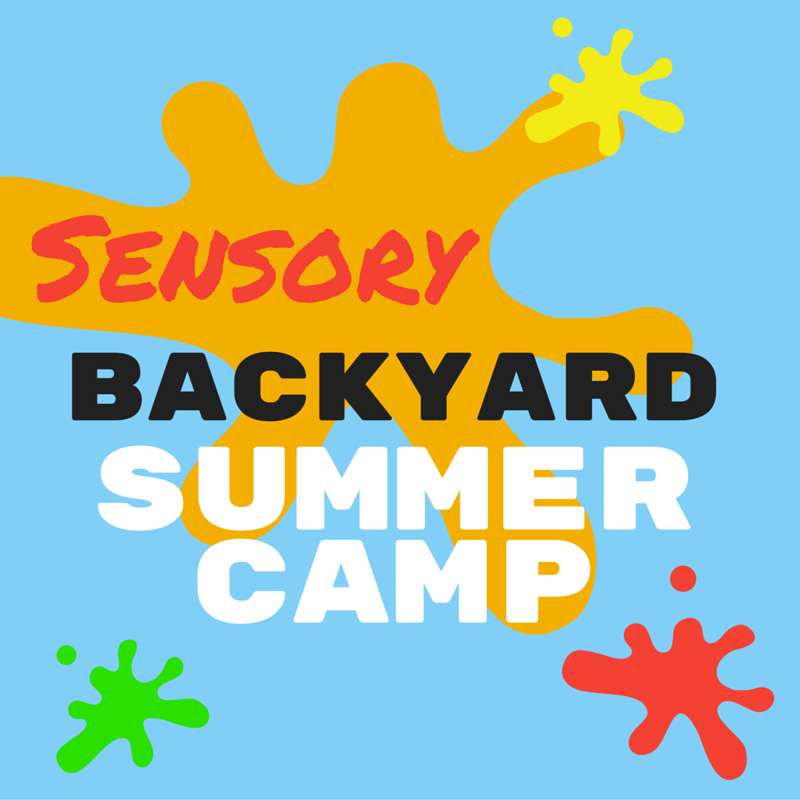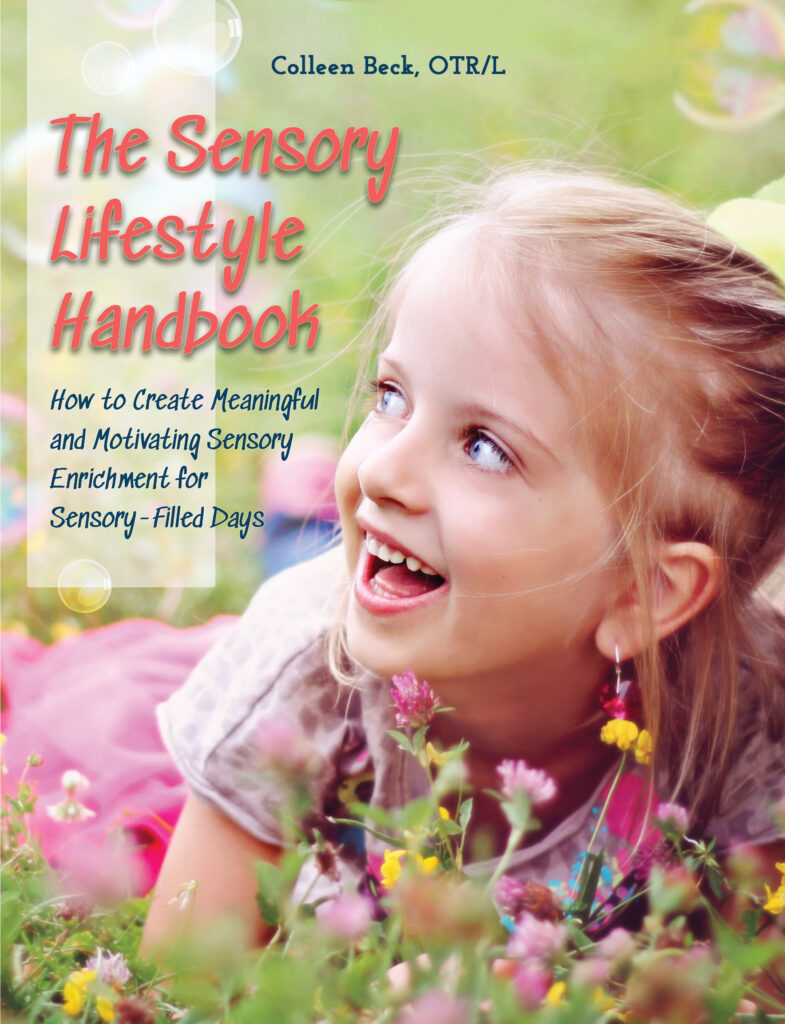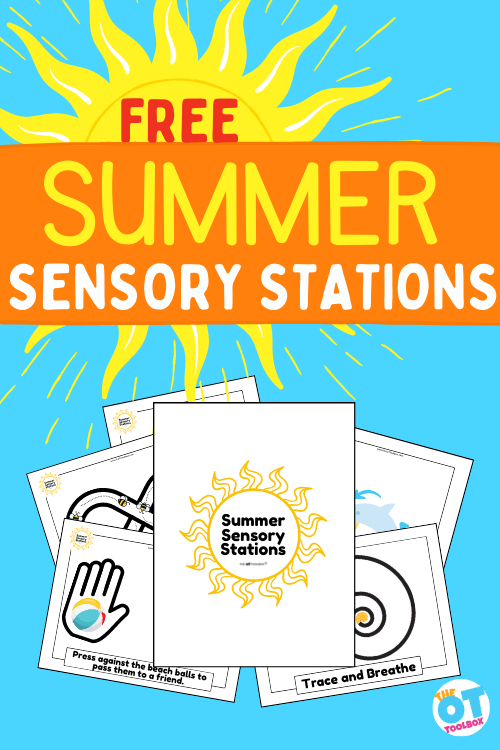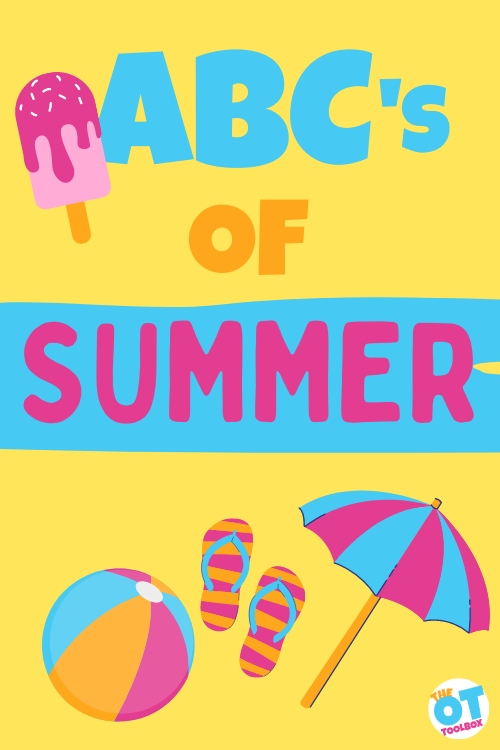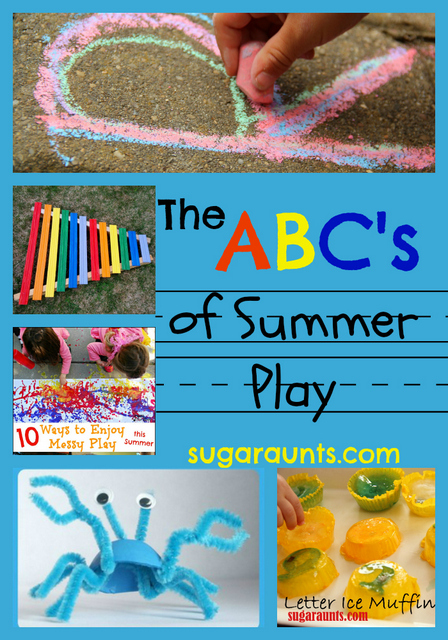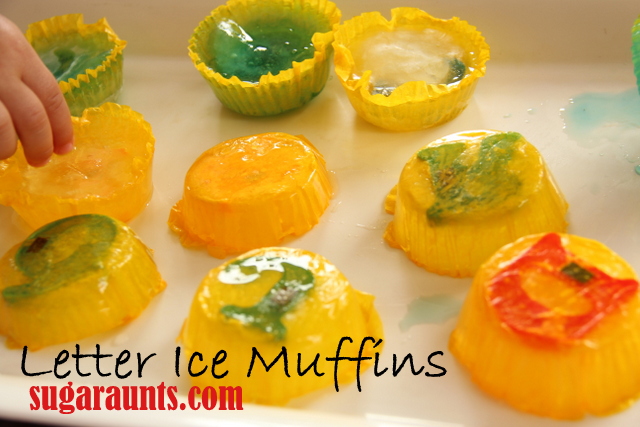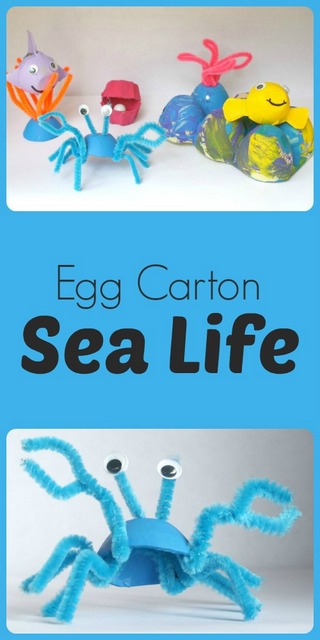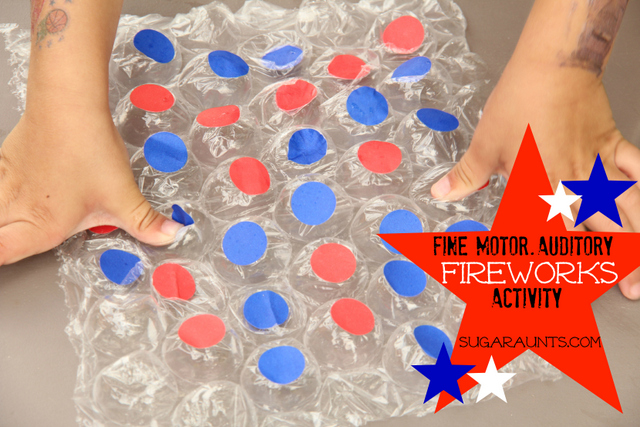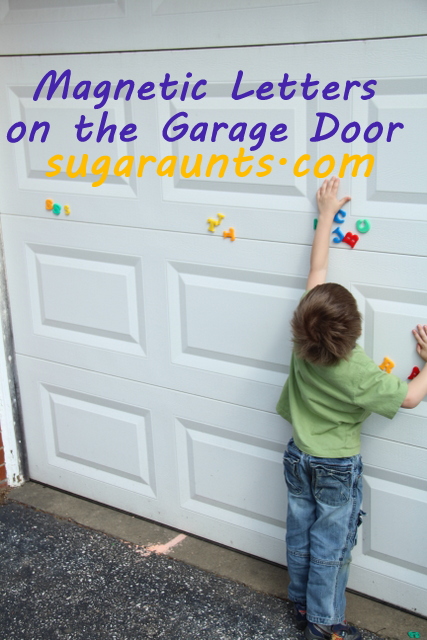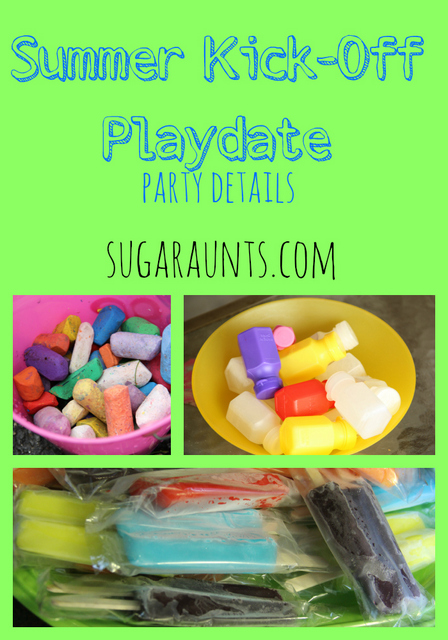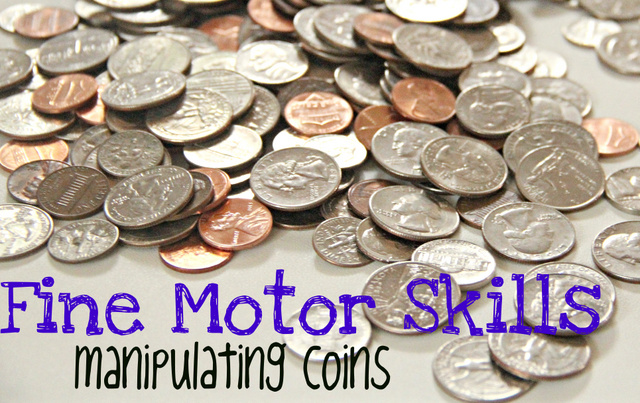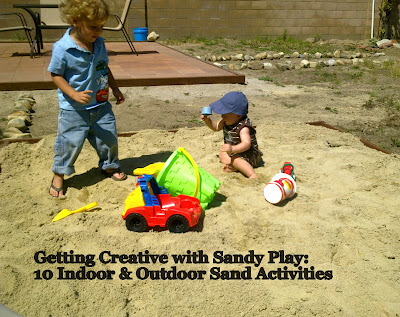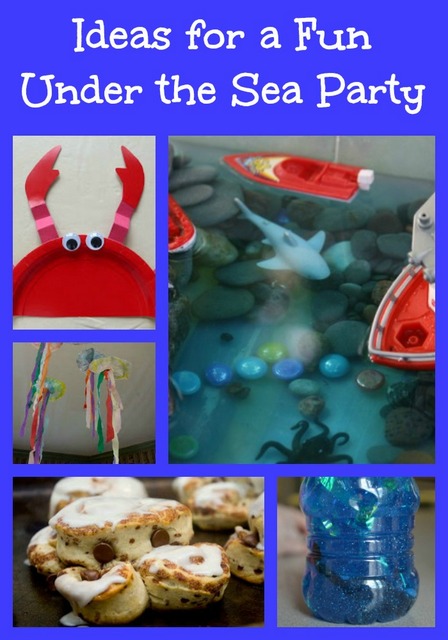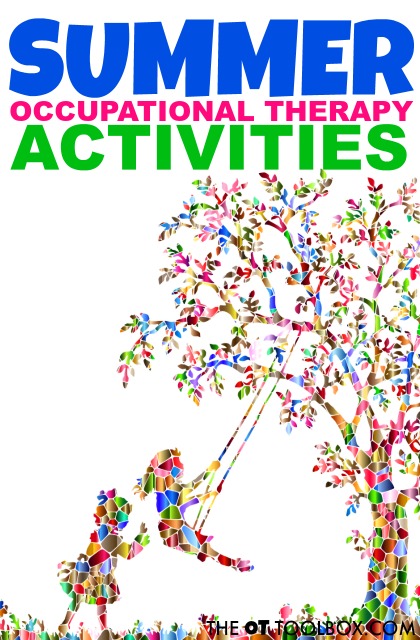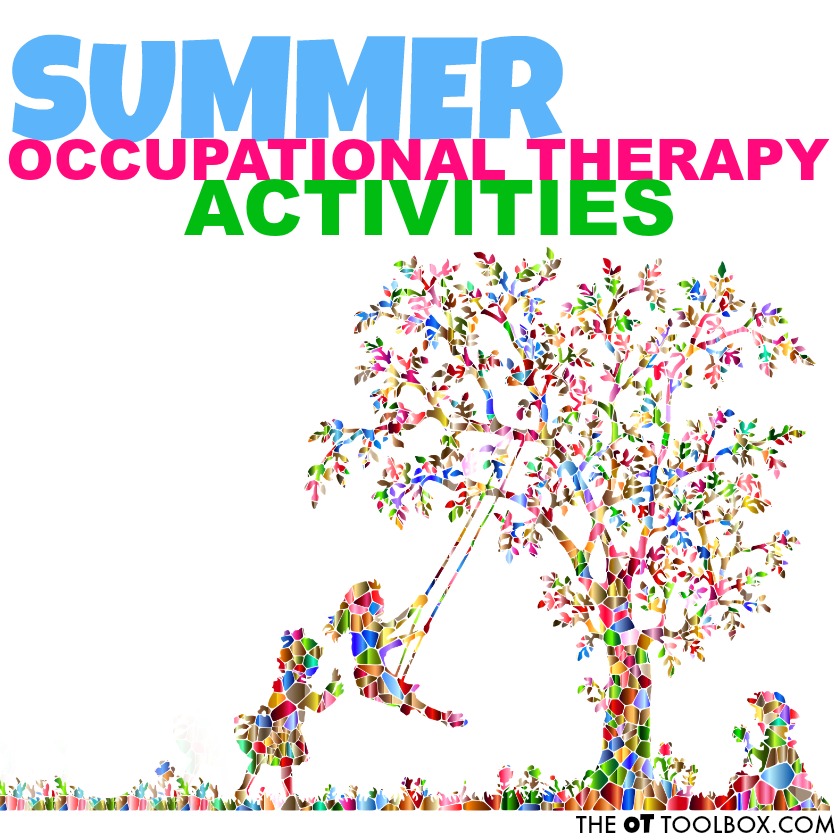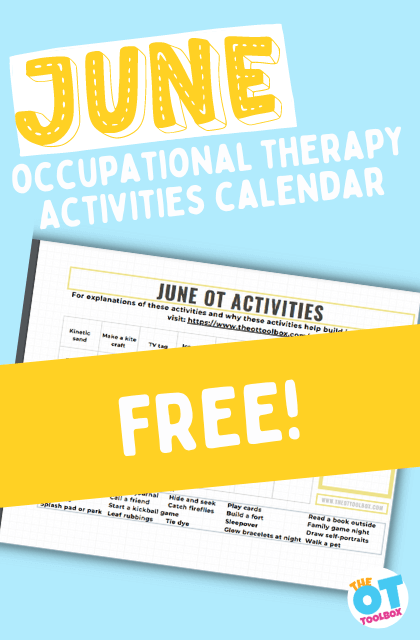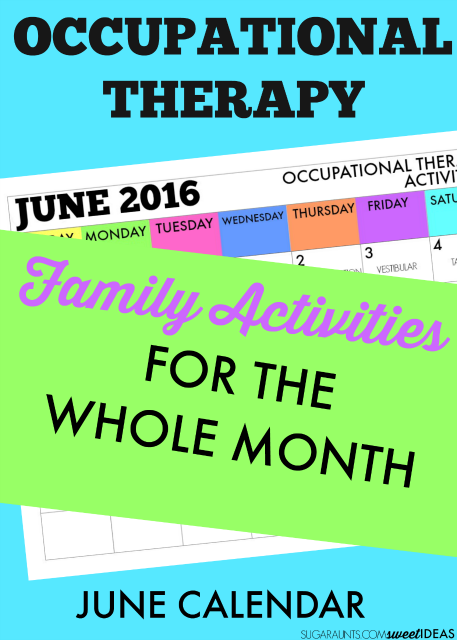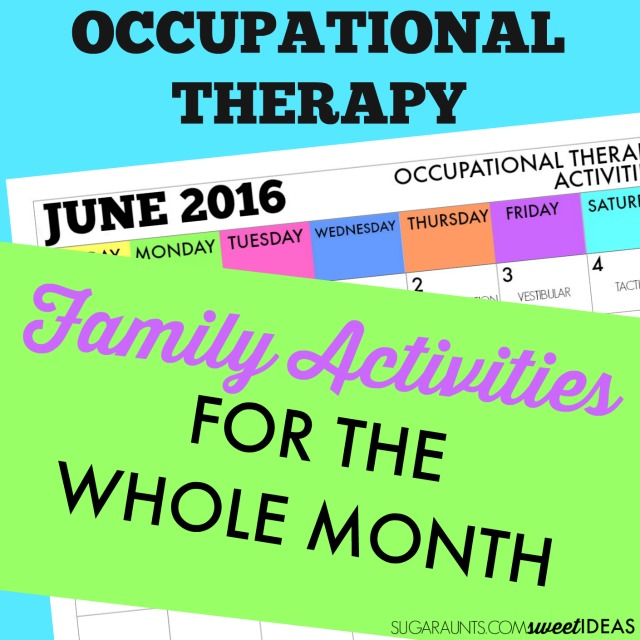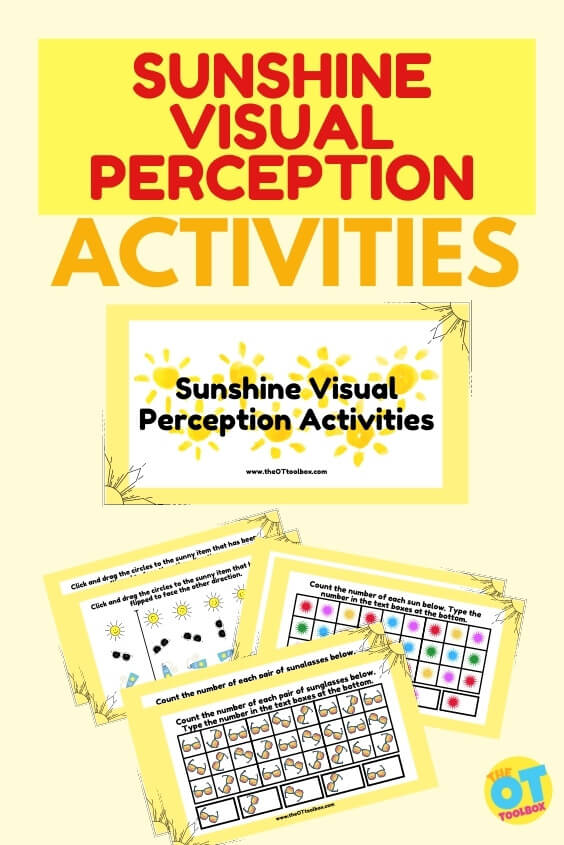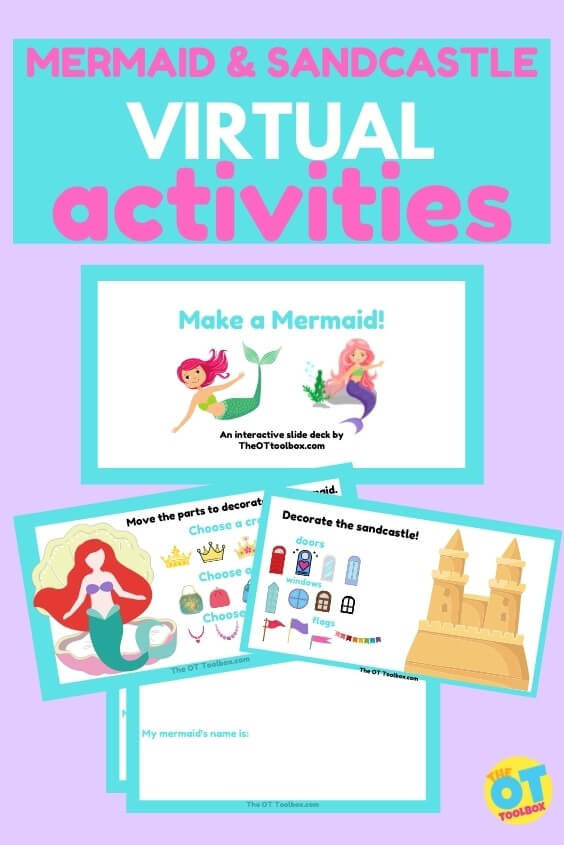Have you ever thought about running a handwriting tutor session or a Summer handwriting camp? A handwriting camp is a great way to support the Summer slide when it comes to handwriting skills, or work on a few handwriting activities in fun and engaging ways over the summer months. For school based OT practitioners, this is a great summer work opportunity too!
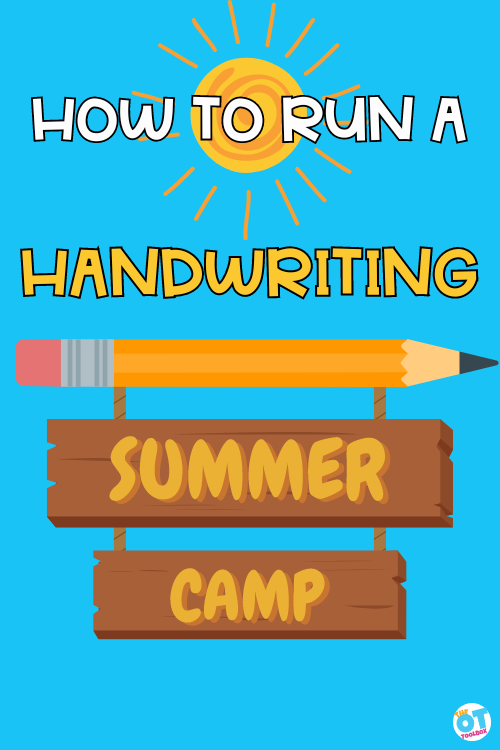
How to Run a Summer Handwriting Camp
There are a lot of different ways you could go about this…I have personally run handwriting sessions in different ways. In this blog post, we’ll cover a few different ideas. Some might work better for you!
- Handwriting tutoring- Reach out to your current caseload (the ones that may benefit) with the option to enroll in cash based tutoring sessions. This is just like summer tutoring that teachers offer. You may want to consider offering this option to a counselor in the school that has a list of teachers that offer tutoring because parents ask for a list of tutors all the time. Why shouldn’t your name be on that list too?
- Run a summer camp. Set this up in a park, at a local rental space, or other location. Outdoor handwriting is a great idea for developing skills! You could incorporate kinesthetic learning activities and outdoor sensory activities.
- Run sessions throughout the summer- This would be weeklong sessions (already outlined with specific activities in mind) and parents could sign up for one or more of the sessions.
- Just offer summer handwriting activities– This could be in a camp style or even a backyard summer camp type of session.
Summer Handwriting Camp Ideas
Summer is a time of relaxation, lazy play, and freedom for kids. It can be a time of sliding backward in skills like handwriting, too. While it’s important to remain free of schedules over the summer and allow kids to just be kids, there can be a need for some kids to maintain skills to prevent a loss of skills.
These sensory handwriting activities are a fun way to incorporate the senses into handwriting practice, in a fun way. I’ve created sensory-based handwriting activities that can be used to create a DIY backyard summer camp at home.
Use these ideas to work on handwriting skills through the senses!
You’ll also be interested in our new Summer Occupational Therapy Activities Packet. It’s a collection of 14 items that guide summer programming at home, at school, and in therapy sessions. The summer activities bundle covers handwriting, visual perceptual skills and visual motor skills, fine motor skills, gross motor skills, regulation, and more.
You’ll find ideas to use in virtual therapy sessions and to send home as home activities that build skills and power development with a fun, summer theme. Kids will love the Summer Spot It! game, the puzzles, handouts, and movement activities. Therapists will love the teletherapy slide deck and the easy, ready-to-go activities to slot into OT sessions. The packet is only $10.00 and can be used over and over again for every student/client!
Grab the Summer Occupational Therapy Activities Packet HERE.
Tips to be a Handwriting Tutor
This post contains affiliate links.
Before beginning handwriting tutoring sessions, or a handwriting camp, you’ll want to create a few pieces of paperwork. Important papers such as disclaimers, waivers, and intake information can cover a few important issues as a handwriting tutor, handwriting coach, or handwriting camp.
- Identify if you are using your therapy license or not? This is an important item to cover from the very start. Identify the scope of the handwriting tutoring sessions or camp sessions. If they are going to be considered under the scope of occupational therapy, there are certain considerations to be addressed. These are not to be considered therapy, unless you are actually doing an occupational therapy evaluation and creating a specific course of treatment. In these cases, fees for therapy or insurance can be collected, and you would operate under your license. Occupational therapy assistants would need to work under supervision of an occupational therapist. If the sessions would be operating without evaluation, assessment, and individualized interventions, then the scope of the sessions can occur under general tutoring or camp activities. In both situations, a disclaimer explaining these specifics should be created (next item).
- Disclaimer- Create a disclaimer that covers the scope of the tutoring or camp sessions.
- What will you cover in tutoring/handwriting camp? Identify the scope of tutoring content or handwriting summer camp content. Are you going to be covering letter formation? Simply handwriting practice? The importance of cursive writing? Cursive letter formation? Copying skills? Functional handwriting? Pencil grasp? Fine motor skills? Free writing?
- Waiver- Create a waiver that covers liability and removes yourself from any liability issues as a tutor or camp creator. There are many waiver and liability templates available, or you can reach out to a local attorney.
- Intake paperwork- Create paperwork for collecting information from parents. This should include name, contact information, special considerations such as allergies, emergency contact information, etc.
- Handwriting Camp Plans- Create a plan for handwriting tutoring or handwriting camp sessions. See below for ideas for each handwriting camp session.
- Collect money- Determine how you will be collect money to paid for tutoring sessions. A great tool that I have used in the past is SendOwl. You can create an account and create a “product” that is listed as a service. For an average of $20/month, you can have a way to collect income, sales pages, and market to your list month after month.
Handwriting tutoring or Handwriting Camp Plans
After you’ve created the logistics of the camp or tutoring session, it’s important to come up with a plan for general tutoring or camp sessions. You can create a plan for the entire camp that covers several weeks so that you’ve got ideas Try these tips to keep handwriting summer camps fun and stress-free.
- Identify what will be covered in the handwriting camp/handwriting tutoring.
Start by identifying what you’ll be covering in tutoring sessions or handwriting camp sessions. These are general topics and can be used with any student no matter the level (this is important if you are not going to be doing an evaluation and treatment plan and operating under your license).
Some topics for handwriting camps and handwriting tutoring sessions can include:
- Letter formation camp
- Letter reversals
- Fine Motor Skills camp
- Cursive writing skills camp
- Copying skills camp
- Free writing
- Letter writing camp
- Sensory motor skills play
- Pencil grasp skills
You can also consider a theme for the camp or handwriting sessions. Some ideas include an outer space camp theme or a circus summer camp theme.
2. Next come up with a schedule for handwriting camp sessions or handwriting tutoring:
Start off sessions with movement, play, and activities that build skills through play. Below are some ideas for the schedule of a tutoring or handwriting camp session:
- Use lots of movement breaks and brain break activities. Try to keep written work tasks as movement oriented as possible.
- Start each mini-session with gross motor activities: crab walks, jumping jacks, heavy work, or vestibular games.
- Move on to fine motor movement activities, incorporating proprioception, and dexterity tasks.
- Proceed to handwriting activities, keeping them as fun and activity-based as possible. Incorporate several of the senses into written work, allowing the children to involve as many senses as possible in each mini-session. Limit written work activities to 15-20 minutes. You can use our free Handwriting printables and resources available on the website. See all of our Free Handwriting Resources HERE
- Try using some handwriting games to keep the motor skill work fun and engaging.
- Encourage 10 minutes of journal writing or letter writing.
- Use these Summer Writing Lists for quick list writing that build handwriting skills
- Finish with movement activities, using whole-body games like playing catch, batting a balloon, jumping rope, or kicking a ball.
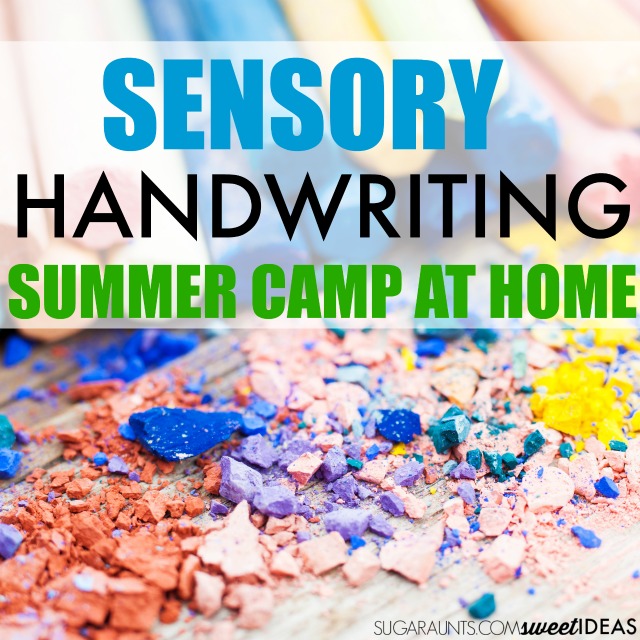
Summer Handwriting Camp Ideas
When it comes to handwriting, the motor sensory systems have a HUGE input in terms of handwriting ability, legibility, and fluency.
START HERE for learning more about sensory processing and handwriting; This is everything you need to know about handwriting and sensory concerns.
I will be the first to admit: There are not too many kids out there who want to work on handwriting during their summer break. The trick to building or maintaining skills it to make it fun. Here are a bunch of ideas for motivating kids to write.
Once you’ve got some ideas to incorporating handwriting into summer days, you can try a few sensory strategies for practicing written work. Try the handwriting ideas below to making written work fun using the senses.
Tactile Sensory Handwriting Ideas:
- Pressing Too Hard When Writing Proprioception Tips is the perfect post if you are looking for tips on writing with too much (or too little) pencil pressure.
- Fizzy Dough Cursive Letters uses the sense of touch with tactile exploratory input with fizzy, sensory letter formation.
- Sensory Letter Formation Work on letter formation using dish soap in this tactile and olfactory letter learning and writing activity.
- Fidget tips and tools can be used for kids who are constantly fidgeting during writing activities.
- Write in shaving cream on a plastic tablecloth.
- Practice letters while writing in oobleck.
- Use mess-free sensory bags.
- Form letters in a sand tray, salt tray, sugar tray, cornmeal tray, or flour.
- Write with wet chalk.
Auditory Sensory Handwriting Ideas:
- Write in the air letters while singing.
- Use Encourage singing or humming during written work.
- Use headphones to block out sounds or to provide background noise.
- Practice written work from an auditory source.
- Take handwriting activities outdoors to the backyard, and notice birds chirping, cars, dogs barking, etc.
- Minimize auditory distractions for other children.
- Ask children to repeat the directions.
- Use visual cues such as index cards with written directions.
- Handwriting on Foam Craft Sticks and letters and coffee filters use the auditory sense when writing. Whisper, tell, yell, rhyme, or sing the letters as your child writes them.
Olfactory Sensory Handwriting Ideas:
- Write in coffee grounds.
- Write with a cinnamon stick in flour.
- Form letters with glue and use scented bath salts to add texture.
- Form letters with scented play dough.
- Use scented markers.
Proprioception Handwriting Ideas:
- Start with these ideas for understanding the basics of the proprioception sense and its impact on handwriting.
- Write on a resistive surface.
- Form letters with push pins on a lid.
- Write with chalk on a driveway or rocks. Try rainbow writing with chalk.
- Write while laying on a trampoline. TIP: Use a clipboard.
- Use a therapy ball to sit on, lay on, and write on.
- Practice letter formation and pencil pressure by lacing a sheet of paper over a foam computer mouse pad. If pressing too hard, the pencil point will poke through the paper.
- A vibrating pen provides sensory feedback to the fingers and hand and helps to keep children focused on the task.
- Practice handwriting by placing a sheet of paper over a piece of sandpaper. The resistance of the sandpaper is great heavy work for small muscles of the hand.
- Practice Ghost Writing: Encourage the child to write very lightly on paper and then erase the words without leaving any marks. The adult can try to read the words after they’ve been erased. If the words are not able to be read, the writer wins the game.
- This will provide the child with awareness and words for the way they are holding the pencil.
- Wrap a bit of play dough or putty around the pencil as a grip. Encourage the child to hold the pencil with a grasp that does not press deeply into the dough. Encourage using a “just right” pressure.
- Provide terms for they way they write. Encourage “just right” writing and not “too hard” or “too soft” marks.
- Use a lead pencil to color in a small picture, using light gray, medium gray, and dark gray. Talk about how using different amounts of pressure changes the shade of gray.
- Practice writing with a pen on thin paper surfaces such as napkins and tissue paper.
Vestibular Sensory Handwriting Ideas
- Write while laying in the slide. Try using the slide as a writing surface while the child is lying on their belly. Try both head towards the top of the slide and head towards the bottom of the slide.
- Try a wiggle seat cushion such as a balance disc or a wobble chair.
- Try sitting in a rocking chair, using a clipboard to write on.
Gustatory Sensory Handwriting Ideas
- Form letters with taste-safe play dough.
- Use bread dough to form letters. Bake and eat.
- Write in pudding.
- Try taste-testing handwriting activities: Try practicing writing while the student is chewing gum, or sucking on hard candy. Other ideas include: chewing licorice, sour candy, chewy gummy candy, lollipops, or crunchy pretzels. These types of oral sensory input are organizing. With the children, see if they notice improved concentration and written work output with these types of oral sensations.
Visual Sensory Handwriting Ideas
- Write with highlighters.
- Write with a flashlight in a darkened room.
- Write with sparklers in the evening. (Use glow sticks for a safer option.)
- Make a DIY light box.
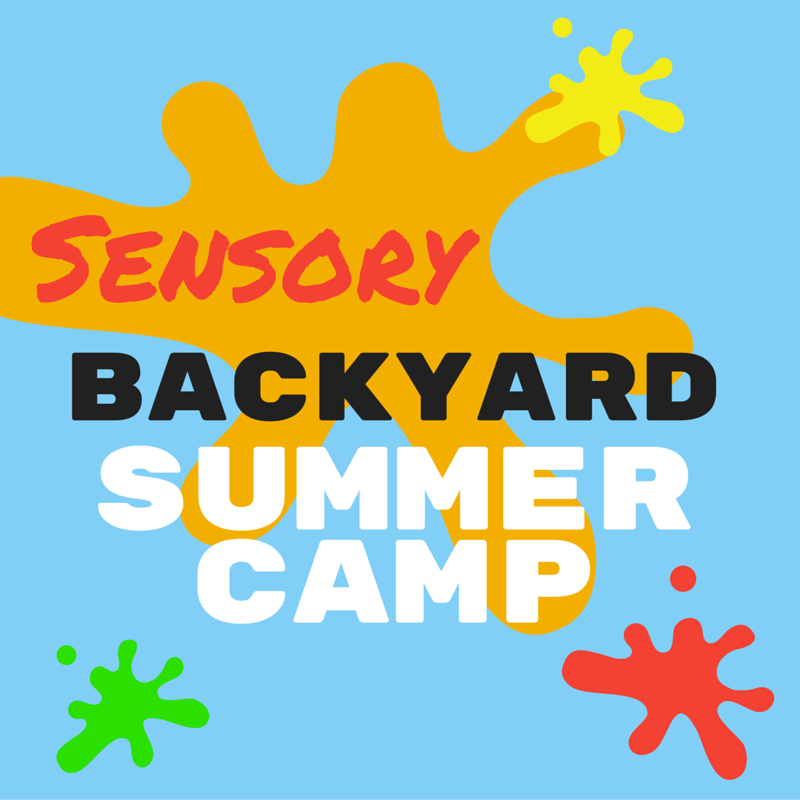
What do you think?
Have you thought about running an occupational therapy summer camp or a sensory summer camp? Maybe you’re thinking about targeting clients or just creating a group activity for non-clients as part of summer programming. Let me know if you’ve done any of the activities listed here. And, tell me…What are some awesome occupational therapy summer camp ideas you’ve had or sensory summer camp strategies that you’ve used?
Want to take summer play to the next level? Be sure to grab your copy of the Summer OT Activities Bundle!







Colleen Beck, OTR/L has been an occupational therapist since 2000, working in school-based, hand therapy, outpatient peds, EI, and SNF. Colleen created The OT Toolbox to inspire therapists, teachers, and parents with easy and fun tools to help children thrive. Read her story about going from an OT making $3/hour (after paying for kids’ childcare) to a full-time OT resource creator for millions of readers. Want to collaborate? Send an email to contact@theottoolbox.com.

